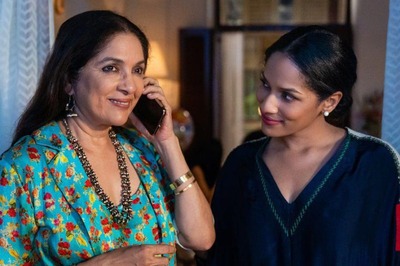
views
A major churning is happening within the Congress party ahead of its crucial Congress Working Committee (CWC) meeting on Monday. A day after Indian Express reported that a letter signed by 23 senior leaders including its sitting MPs, former Chief Ministers and senior party leaders was sent to the interim party president Sonia Gandhi asking for sweeping changes, huge support has poured in for her after she reportedly offered to quit.
While this is not the first time the leadership of the 134-year-old party is being questioned from within, what is significant this time is the number of senior party functionaries who have put their names expressing their dissent with the party leadership at a time when the Congress is arguably at its weakest. Though in their letter written in early August, the 23 leaders have assured that the Nehru-Gandhi family will always remain an integral part of the “collective leadership” of the party, with Rahul Gandhi unwilling to shoulder the responsibility for running the party and Sonia Gandhi functioning only as an interim president for the last one year, questions have clearly been raised on the capability of the Nehru-Gandhi family to mount a serious challenge to the Narendra Modi-led BJP.
In this piece, News18 looks at a few eventful moments in Congress’ history to look back at the instances when the party was shaken from within and to understand how the issue of leadership was settled.
January 1966: Indira Gandhi becomes PM
After the death of the then Prime Minister Lal Bahadur Shastri in Tashkent after signing the historic Tashkent accord between India and Pakistan, it fell upon the Congress to immediately choose its successor. The main contender for the job was Morarji Desai, who had earlier lost the battle to become the Prime Minister to Shastri. Against him the old guard in the party pitched Nehru’s daughter Indira Gandhi, Rajya Sabha MP and minister for information and broadcasting. The role of K Kamraj is said to have been essential in rallying support of party heavyweights to help Indira win the battle by over 180 votes. She was named as the party chief and sworn in as the Prime Minister a few days later.
November 1969: Indira Gandhi Tightens Grip Over Party
The mood in the Congress, which had lost elections in nearly half the states after losing heavily in the 1967 general elections, was similarly downbeat. After four months of several intra-party conflict, the then chief of Congress party S. Nijalingappa expelled Prime Minister Indira Gandhi from the party for "fostering a cult of personality" in November ‘69. The old guard, or the "Syndicate" as it was called, was angry with the "gungi gudiya" (dumb doll) for having a mind of her own.
Indira had earlier won a minor victory through some deft political maneuvering of VV Giri, an independent candidate, as the fifth President of India against the wishes of the Syndicate. After she was expelled, she received an overwhelming support in the following Congress Parliamentary Party meeting. The party split but Indira was able to save her government with some help from the Left and DMK. She swept the 1971 general elections and eventually won the battle of succession overwhelmingly.
May 1987: VP Singh’s Revolt
Another big shake up happened in the party when Congress’s ‘Mr Clean’, VP Singh, who had earlier supervised high-profile raids as the Union Finance Minister, resigned in May 1987 after the Bofors scandal broke out. After being suspended and expelled from the party, Singh founded Janata Dal to directly oppose the then Prime Minister Rajiv Gandhi. Former Congress minister Arif Mohammad Khan, who had resigned from the Cabinet over the Shah Bano case, joined VP Singh. Important state leaders like Odisha’s Biju Patnaik and Karnataka’s Ramkrishna Hegde volunteered to join. In the ’89 general elections, Singh defeated Gandhi and, leading the National Front with support of the BJP, became the Prime Minister.
March 1998: Sitaram Kesri’s Ouster, Sonia Gandhi’s Entry
In late 1997, a few months before the 1998 general elections, Sonia Gandhi, who had since the death of her husband resisted pressure to join the party, suddenly announced that she would campaign for the Congress in the Lok Sabha polls. Sitaram Kesri was the Congress president at the time. Gandhi joined the party in December 1997. While Kesri had called Sonia a "saviour" and welcomed her entry, he was reluctant to hand over the party's reins to her, as demands for her becoming the Congress president grew.
On March 14, 1998 the Congress Working Committee passed a resolution asking the 82-year-old veteran to step down as the party president. An anecdote about that fateful day when Sonia finally took control of the party is that Kesri was reportedly locked in a room in the Congress headquarters, 24 Akbar Road, to prevent him from creating obstacles in Sonia entering the office of the Congress president. In a bloodless coup, which left Kesri befuddled, Pranab Mukherjee read out CWC resolutions thanking Kesri for his services and appointing Gandhi as the next party president.



















Comments
0 comment